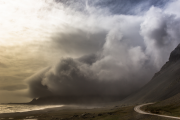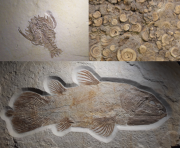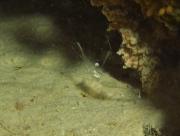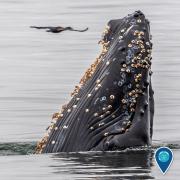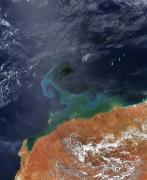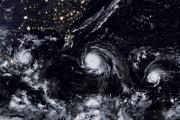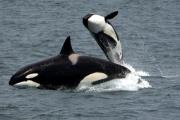Radio Program
Our regular Science and the SeaTM radio program presents marine science topics in an engaging two-minute story format. Our script writers gather ideas for the radio program from the University of Texas Marine Science Institute's researchers and from our very popular college class, Introduction to Oceanography, which we teach to hundreds of non-science majors at The University of Texas at Austin every year. Our radio programs are distributed at to commercial and public radio stations across the country.
Life in Canada’s Gulf of St. Lawrence has been on a seesaw. Some species all but disappeared, allowing others to thrive. Then the seesaw flipped the other way. Some all-but-vanished species tipped up, while the thriving ones tipped down.
In early 1945, as World War II neared its climax, 19-year-old Gore Vidal was the first officer of an Army supply ship in the Aleutian Islands of Alaska. The weather was often stormy. Another ship in the fleet was hit by an especially nasty type of wind storm. Vidal wrote his first novel about his time in the Aleutians, and incorporated that storm into the plot. In fact, he named the novel after the wind: Williwaw.
Life always seems to find a way. It inhabits every nook and cranny on Earth, from the upper atmosphere to the rocks below the bottom of the ocean. And even when there’s a disaster, it bounces back—sometimes in a big hurry.
An example comes from a quarter of a billion years ago, after the deadliest known mass extinction. Known as the Permian-Triassic event, it was the result of huge volcanic eruptions. They warmed the atmosphere and made the oceans far more acidic. That killed off most of the life on Earth, including 80 percent of life in the oceans.
In the human world, having “bright eyes” is considered a good thing. It means you’re alert, curious, or energetic—a bright personality with a bright outlook. But in the marine world, bright eyes can be deadly. A critter with bright eyes is easier for predators and prey to spot. That makes it more likely to get eaten, and less likely to catch its own meals.
Some marine creatures have developed a way to hide those bright eyes. A thin glass coating bends and reflects light in a way that allows the eyes to blend into the background.
Lots of people pay good money for exfoliation treatments—removing their dead skin. But some humpback whales take care of their own treatments. They strip away dead skin and parasites by rolling in the sand on the sea floor.
Scientists discovered the spa treatments when they studied three humpback whales, in 2021 and ’22. They attached instrument packages to the backs of the whales. The packages included high-def video cameras and sensors to record depth, temperature, and other conditions. After a few hours, the packages released and bobbed to the surface.
A tropical storm doesn’t have to be big to have a big impact. In 2019, for example, a hundred thousand square miles of the Coral Sea, east of Australia, turned green after the passage of Tropical Cyclone Oma. The storm’s winds topped out at just 80 miles per hour—the equivalent of a category one hurricane. Yet it lingered over the same patch of ocean for days. When it dissipated, the ocean was much greener—the result of a massive “bloom” of tiny organisms known as phytoplankton.
Salt marshes are defenders. They protect the coast against erosion and storm surges. They store carbon, which helps limit global warming. And they provide habitat for fish, shellfish, and birds.
Yet the marshes could use their own defenders. They’re disappearing—the result of rising sea level and coastal development. And a recent study says that more than 90 percent of them could disappear by the end of the century.
The slender snipe eel doesn’t look like a fish at all. Instead, it looks like a long shoelace attached to the head and beak of a skinny duck. But that shoelace is bony, because the eel’s backbone has more vertebrae than any other animal on Earth—an average of about 750.
Slender snipe eels are one of nine species of snipe eels, which are found in warmer waters all around the planet. They live in the open ocean, away from land. Most are found at depths of 1,000 to 2,000 feet, but some have been recorded more than two miles deep.
One Hurricane Katrina or Hurricane Harvey is a disaster. But having two such hurricanes hit the same area within a few weeks of each other is catastrophic. Coastal infrastructure is demolished, hundreds of thousands are left homeless, and it takes years for the region to recover.
Until recently, the odds of back-to-back storms have been small. But a recent study says that our changing climate appears to be boosting those chances. Some regions of the Atlantic and Gulf coasts of the U.S. could see double hits as often as every three years.
For decades, whales in the Pacific Northwest were declining. Year after year, the populations kept getting smaller. In recent years, though, many of the whales have been coming back. Thanks to conservation efforts and legal protections, the numbers recorded by whale-watching organizations have been going up. In 2022, they even set some records.
Groups monitor populations in the Salish Sea—a narrow band that hugs the coast from central Washington to southern British Columbia. They add up eyewitness reports from commercial whale watchers and others.


